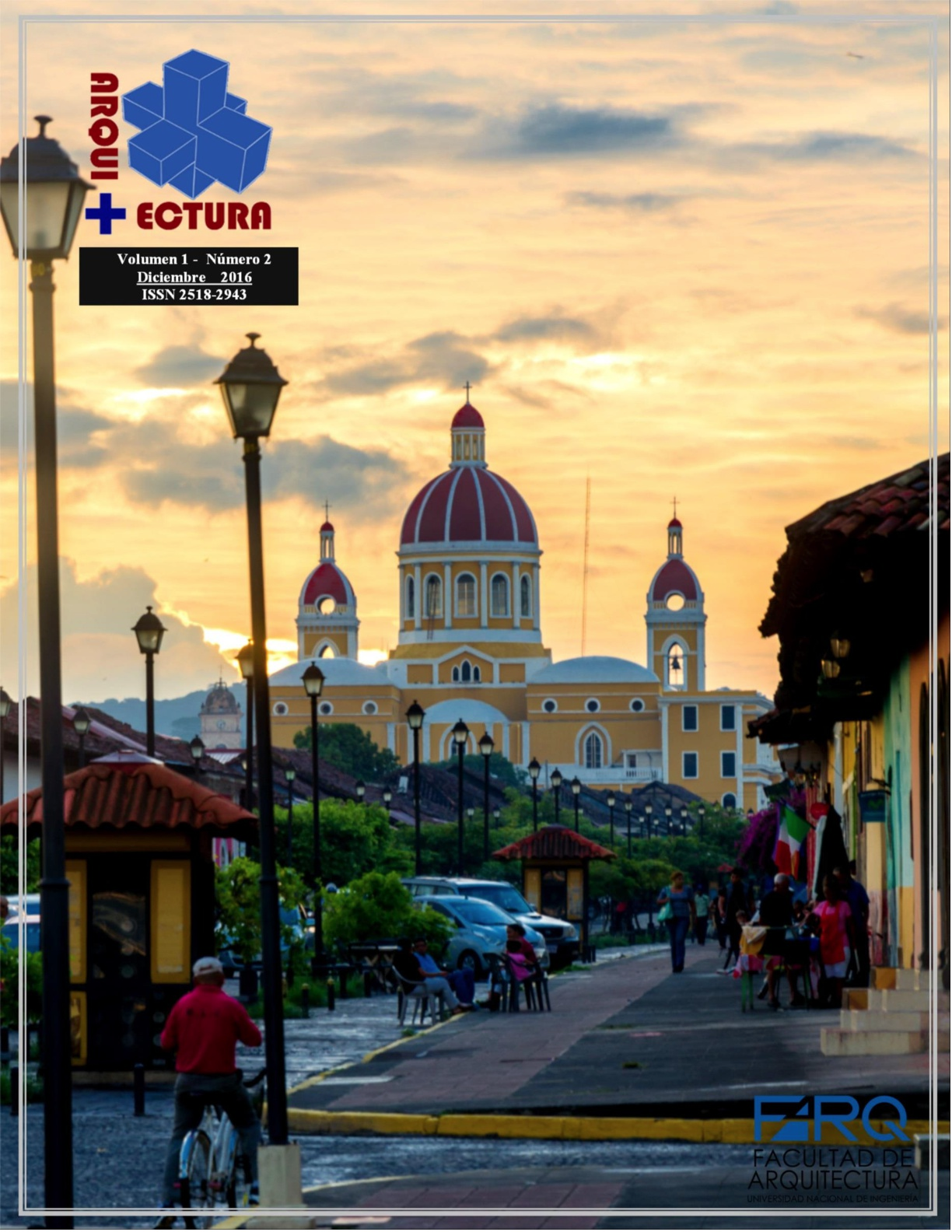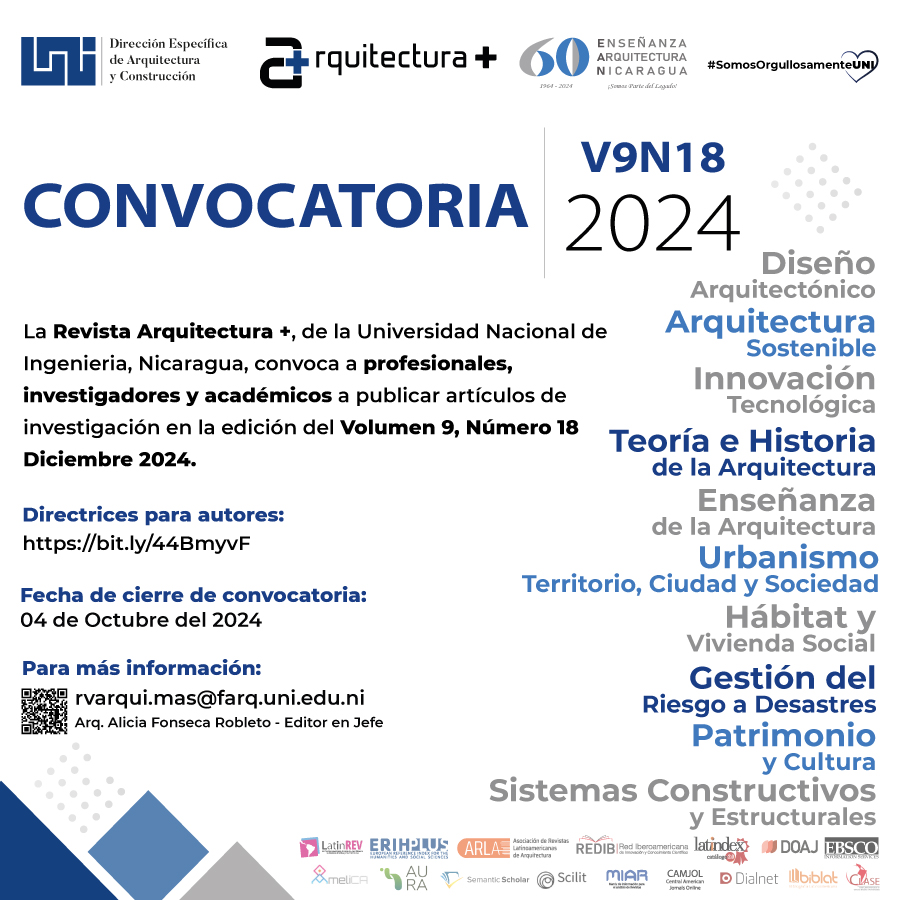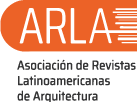Formas de expresión de la segregación urbana en la ciudad Managua
DOI:
https://doi.org/10.5377/arquitectura.v1i2.9204Palabras clave:
Segregación urbana, políticas urbana - habitacionales, patrones de segregación, pobreza urbana, ManaguaResumen
La segregación en el contexto urbano tiene distintas formas de expresión y evidentemente este fenómeno se está manifestando en la mayoría de las ciudades latinoamericanas. En el caso de las ciudades nicaragüenses esta temática se está abordando recientemente desde el 2010, uno de los primeros estudios se dio mediante una monografía para optar al grado de Sociólogos en el 2013 en la Universidad Centroamericana UCA, cuyo título fue; Segregación Urbana en Managua, posteriormente en el 2015 se publica el Cuaderno de investigación Nº 30 sobre Segregación socio-residencial en la ciudad de Managua, por UCA Publicaciones. Y con este artículo se completan otra parte de esta línea de investigación, que pretende en este año consolidar un estudio más amplio e integral sobre esta temática. Este esfuerzo nace de la realidad que se manifiesta en las últimas décadas, en donde Managua ha venido experimentando una serie de cambios urbanos, que han trasladado la actuación de las políticas urbanas - habitacionales y el mercado inmobiliario como agente privado al espacio urbano. Las actuales tendencias de desarrollo urbano muestran una estrecha relación entre estas políticas y fenómenos como el de la segregación y sus distintas expresiones. Muchas de estas expresiones parten del análisis de la división social del espacio y de la importancia de entender la evolución urbana e histórica de la ciudad de Managua y su relación con la segregación socio-territorial, socioespacial, socioeconómica y socio-residencial, todas estas vistas, como un conjunto de expresiones que tienen distintas formas de
reflejarse en la realidad actual de la ciudad y sus pobladores. También se deben explorar los patrones de segregación con relación a modelos teóricos, metodológicos y referenciales, que explican este fenómeno en las ciudades latinoamericanas y que pueden permitir una correlación con la ciudad de Managua. Y, por último, se reflexiona sobre los efectos de la segregación en sus distintas formas de expresión; socio-territorial, socioespacial, socioeconómica y socioresidencial, tanto para los habitantes, como para la misma ciudad de Managua. Ya que estas tendencias actuales de la diferenciación social en las realidades urbanas son frecuentemente tipificadas como segregación, y por ello, cobra importancia comprender las distintas formas de expresión de la segregación urbana en la ciudad de Managua.





















